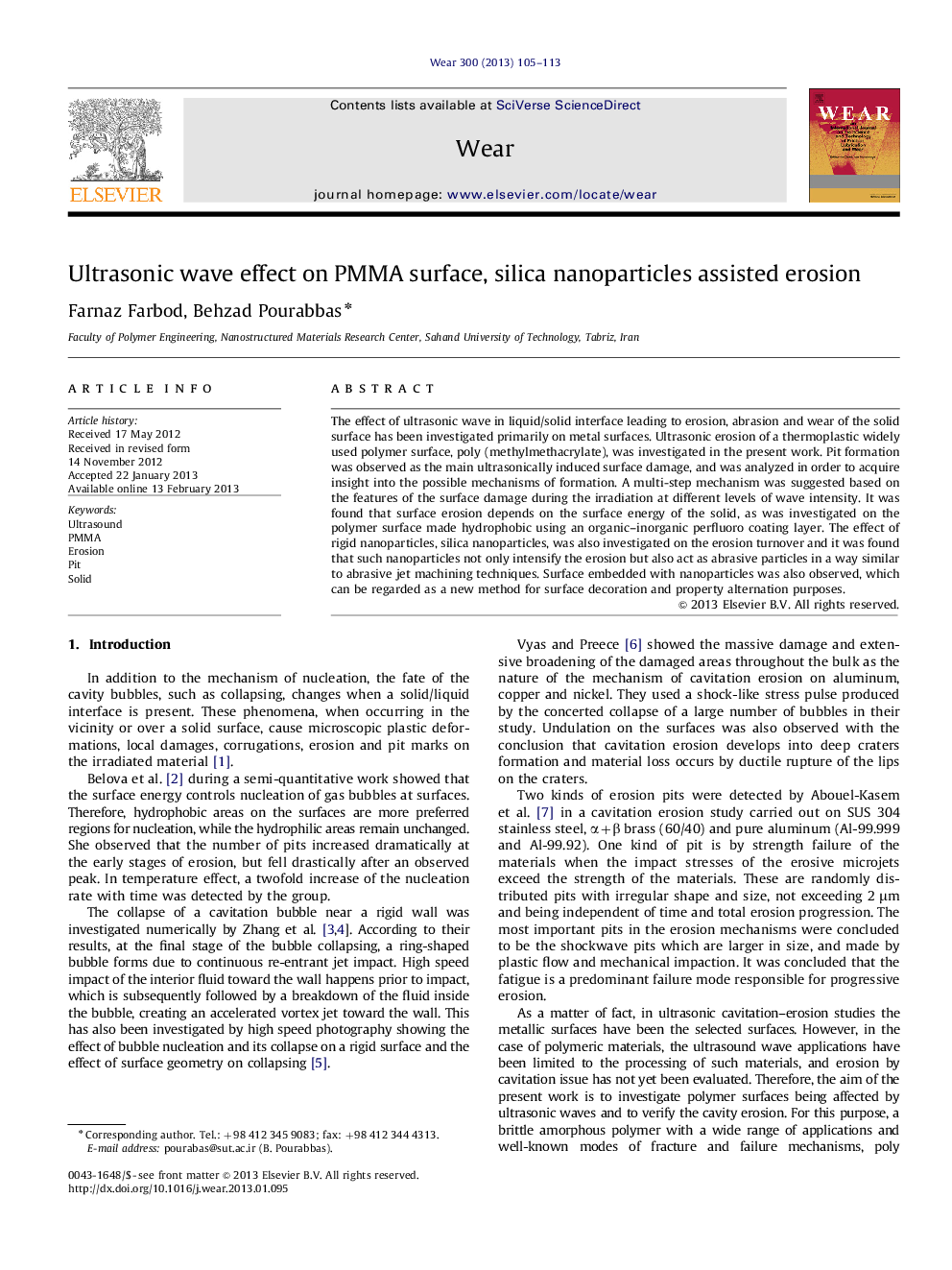| Article ID | Journal | Published Year | Pages | File Type |
|---|---|---|---|---|
| 617644 | Wear | 2013 | 9 Pages |
The effect of ultrasonic wave in liquid/solid interface leading to erosion, abrasion and wear of the solid surface has been investigated primarily on metal surfaces. Ultrasonic erosion of a thermoplastic widely used polymer surface, poly (methylmethacrylate), was investigated in the present work. Pit formation was observed as the main ultrasonically induced surface damage, and was analyzed in order to acquire insight into the possible mechanisms of formation. A multi-step mechanism was suggested based on the features of the surface damage during the irradiation at different levels of wave intensity. It was found that surface erosion depends on the surface energy of the solid, as was investigated on the polymer surface made hydrophobic using an organic–inorganic perfluoro coating layer. The effect of rigid nanoparticles, silica nanoparticles, was also investigated on the erosion turnover and it was found that such nanoparticles not only intensify the erosion but also act as abrasive particles in a way similar to abrasive jet machining techniques. Surface embedded with nanoparticles was also observed, which can be regarded as a new method for surface decoration and property alternation purposes.
► Ultrasonic waves cause cavitation erosion on polymeric materials. ► Pre-pit formation leading to complete pits is the supposed mechanism of erosion. ► Silica nanoparticles intensify erosion by the heterogeneous cavitation mechanism. ► Surfaces with lower surface energy are more susceptible to ultrasonic erosion.
